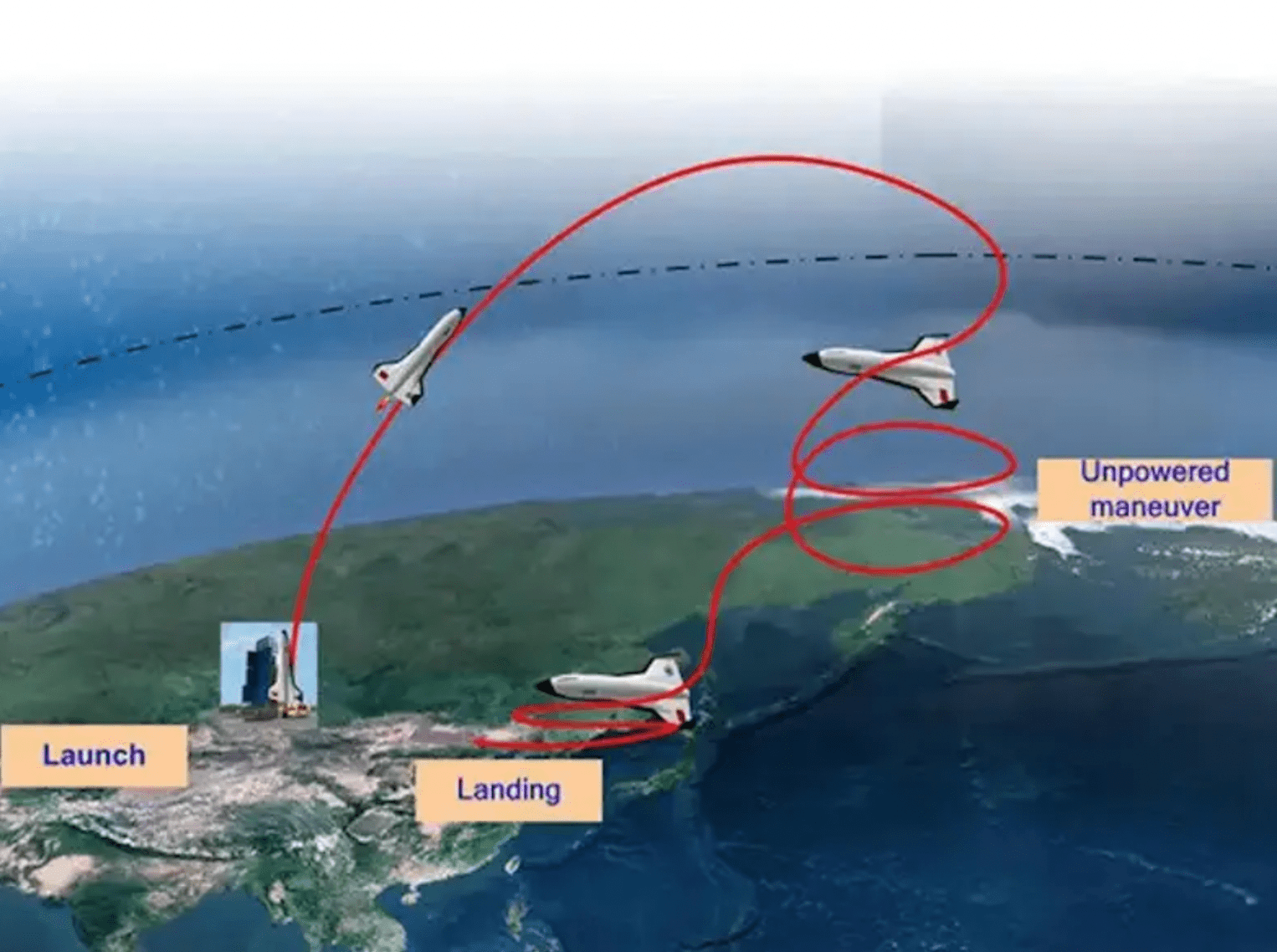China’s shadowy miniature spaceplane appears to have deployed at least six objects into orbit while conducting its latest mission, its third. The reusable space vehicle, which is understood to be broadly comparable to the U.S. Space Force’s X-37B, clearly has military applications, although the exact nature of its payloads remains mysterious.
The Chinese spaceplane, named Shenlong (meaning Divine Dragon), has placed the objects in Earth orbit since it was launched from the Jiuquan Satellite Launch Center on December 14. The existence of these objects has been confirmed by amateur spacecraft trackers.
The spaceplane itself is launched atop a traditional space launch rocket and is propelled into orbit using a secondary booster. It returns to Earth in an unpowered mode, much like the X-37B.
One amateur astronomer, Scott Tilley, told Space.com’s Brett Tingley that some of the objects — which have been named A, B, C, D, E, and F — seem to be transmitting signals. Tilley has described these objects as “mysterious wingmen,” a nod to the “loyal wingman” terminology used for the drones that operate collaboratively with piloted aircraft. The Shenlong, of course, is uncrewed.
Tilley also provided Space.com with details on the differences in transmissions between the objects, with Object A said to be sending small amounts of data, while Objects D and E seem to be only emitting “placeholder” signals, without accompanying data.
“It should be noted that unlike emissions early in the Chinese spaceplane missions 1 and 2, these emissions are very intermittent and do not stay on long,” Tilley told Space.com. “It’s taken days of observations tracking pass after pass with dish antennas to come up with this data.”
While we cannot be entirely sure that these mysterious signals come from objects released by the Shenlong, the evidence is compelling.
Extensive signal analysis by various satellite trackers indicates that the transmissions come either from the objects or from something else very close to them: There is no obvious sign of any other object that might have been responsible for them. The transmissions also correlate with the expected paths of the different objects and also conform to the kinds of signals previously emitted by Chinese spaceplane missions, with the same unique frequency.
There are also signs that there could be more intriguing transmissions to come. As Tilley explained, the fact that the objects are on different orbits, ranging from almost circular to broadly elliptical, means they will move closer to one another, with the potential for transmissions or other interactions between them.
That the Chinese spaceplane can deploy payloads into space is no secret, with previous missions having involved the release of at least one small object each. At the time of the Shenlong’s second mission, in late 2022, SpaceNews speculated that those objects could be small satellites for monitoring the spaceplane, or some kind of test payload, perhaps to gain more experience in launching items from the spaceplane. It’s very possible that the craft has reached a point of maturity where more ambitious experiments are being fielded by it. For instance, satellites capable of on-orbit manipulation and disrupting, degrading, destroying, and surveilling other satellites is a major area of development as space increasingly becomes a contested environment.
While details about the design of the spacecraft itself, and its particular technologies, are almost entirely absent, it’s notable that putting small payloads into orbit now seems to be a significant part of its repertoire.
Publicly, at least, China has claimed that its spaceplane is for commercial use. However, it has very obvious military applications, especially as a convenient and potentially efficient way to get into orbit and stay there for extended periods.

After all, when it comes to putting payloads into space, a spaceplane offers several advantages, being faster, more flexible, and less predictable than a conventional rocket launch, for example.
Payload delivery is also an important part of the X-37B’s role, too, with the U.S. spaceplane now being equipped with a service module, an additional payload package that increases the number of missions that the vehicle can undertake. Details of most of what the service module contains remain classified.

Ultimately, the Shenlong may not only be able to place objects in orbit but also retrieve them and perhaps even manipulate them. Such a capability would allow China to keep an intelligence-gathering satellite, for example, in orbit for a long period before recovering it and bringing it back to Earth for further analysis and potential reuse. The fact that spaceplanes are capable of dynamically maneuvering in orbit makes them especially suitable for these kinds of experiments — or even for interfering with space objects belonging to other nations.
The U.S. Space Force is already highly attuned to the concept of “orbital warfare,” both in terms of its own mission spectrum and of potential hostile actors, where China is a significant player.
Back in 2021, the U.S. Space Force confirmed that China (as well as Russia) was already launching “reversible attacks,” such as electronic warfare jamming, temporarily blinding optics with lasers, and cyber-attacks, on U.S. satellites “every single day.” As we discussed earlier, a spaceplane would be an especially suitable candidate to expand these types of missions and there is the possibility that the objects released by the Shenlong could even be related to exploring these capabilities.

The potential of the Chinese spaceplane extends beyond inserting certain payloads into orbit. The Shenlong or a similar vehicle, could also be a valuable intelligence-gathering asset, while a larger development of the same concept could potentially even be used to transport cargo or personnel over huge distances at remarkable speeds. This is a concept that has been explored by the U.S. military, too.
There’s also the intriguing nature of the possible relationship between Shenlong’s recent launch and the planned seventh mission for the X-37B.
While the X-37B was set to launch aboard a SpaceX Falcon Heavy rocket on December 7 at Kennedy Space Station, Florida, the mission has been repeatedly delayed, most recently being scrubbed on December 13. It’s now planned for launch no earlier than December 28. It will be the first launch using such a powerful rocket and it should see the vehicle inserted in a far higher orbit than before.
However, Chief of Space Operations Gen. B. Chance Saltzman told reporters at the Space Force Association’s Spacepower Conference earlier this month that China launching the Shenlong at around the same time as the X-37B was scheduled to go into space was “probably no coincidence.”
“It’s no surprise that the Chinese are extremely interested in our space plane. We’re extremely interested in theirs,” Saltzman said. “Because it is a capability; the ability to put something in orbit, do some things, and bring it home and take a look at the results is powerful. And so these are two of the most watched objects in orbit while they’re in orbit. It’s probably no coincidence that they’re trying to match us in timing and sequence of this.”

The shadowy nature of the Chinese spaceplane program means that it’s unlikely we’ll get official word on exactly what kinds of objects the Shenlong has been releasing, and to what ends. For now, we may have to rely on amateur astronomers, like Scott Tilley, to gradually uncover more details of what the Shenlong is up to. Whatever the details of its latest mission, it’s another clear sign of the rapid advances that China — and its military — is making in the space realm.
Contact the author: thomas@thedrive.com
